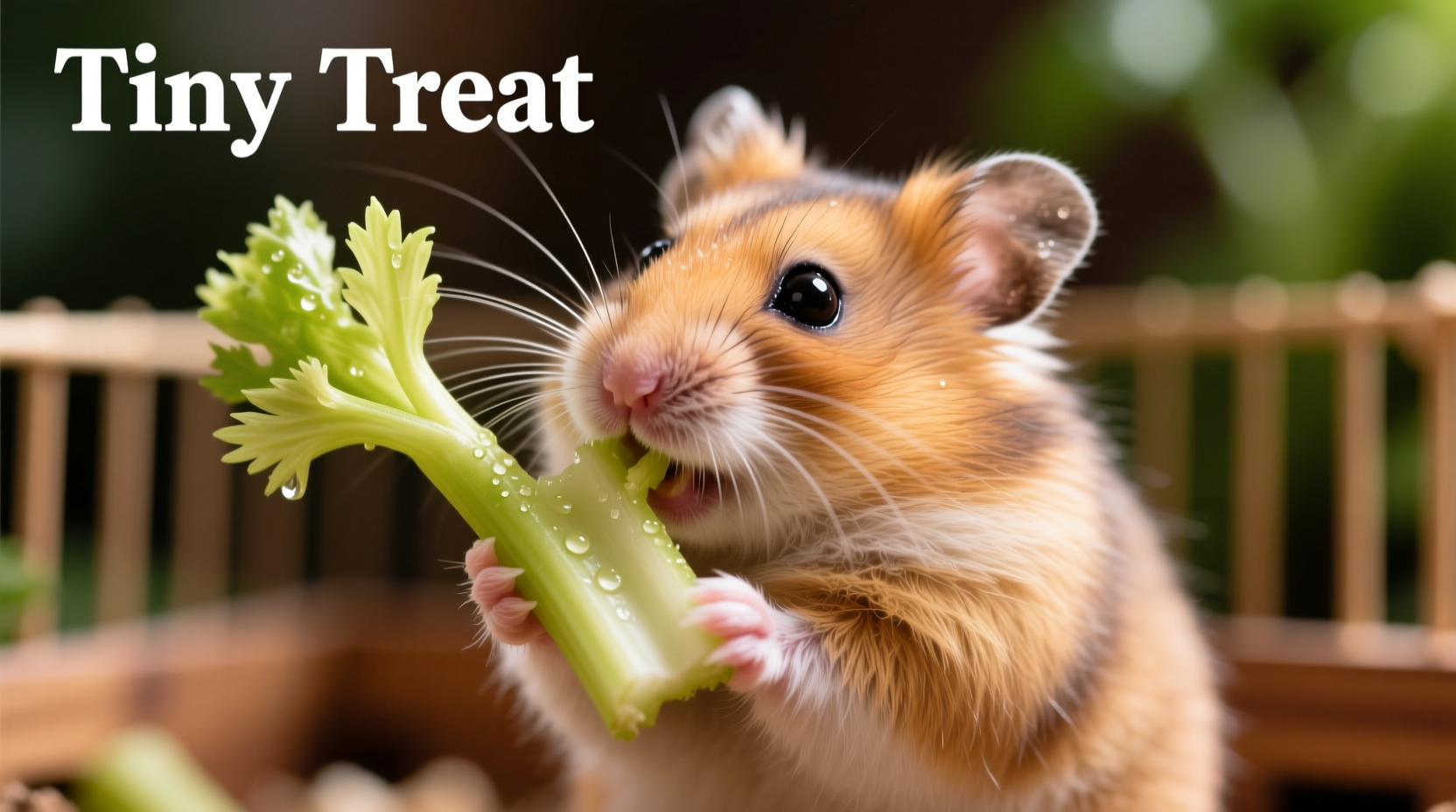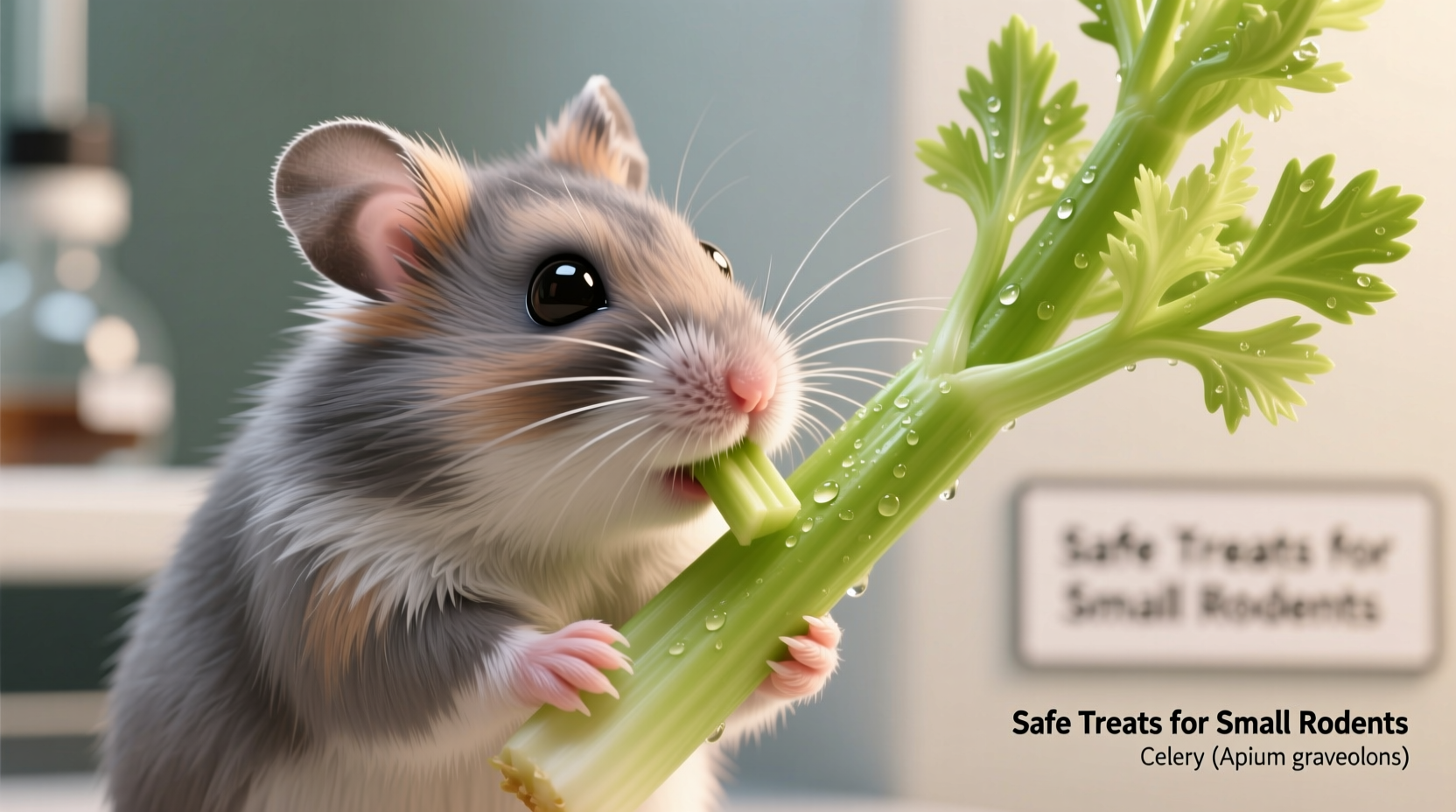Understanding Hamster Dietary Requirements
Hamsters are omnivores with specific nutritional needs that differ significantly from humans. While their primary diet should consist of commercial hamster food (about 80%), small portions of fresh vegetables can provide valuable variety and additional nutrients. Understanding what makes a safe treat is crucial for responsible pet ownership.
Unlike humans, hamsters have delicate digestive systems that can't process certain foods well. Foods high in sugar, fat, or water content require special consideration. Celery falls into the latter category - while not toxic, its composition requires careful preparation and portion control.
Celery's Nutritional Profile for Small Pets
Celery offers several beneficial nutrients for hamsters when served appropriately:
- Vitamin K - Supports blood clotting and bone health
- Potassium - Essential for proper muscle and nerve function
- Fiber - Aids digestion in small amounts
- Hydration - High water content helps with fluid intake
However, the same water content that provides hydration can cause digestive upset if overfed. The American Society for the Prevention of Cruelty to Animals (ASPCA) confirms celery is non-toxic to rodents, but emphasizes portion control is essential.

Safe Preparation Guidelines for Hamster Treats
Proper preparation minimizes risks while maximizing benefits:
- Thorough washing - Remove all pesticides and contaminants
- String removal - Peel fibrous strings that could cause choking
- Size matters - Cut into pea-sized pieces (about 1/2 inch)
- Frequency limits - Offer only once or twice weekly
- Monitor reaction - Watch for digestive changes after first serving
According to veterinary nutrition guidelines from the Royal Society for the Prevention of Cruelty to Animals (RSPCA), the appropriate portion size for a Syrian hamster is no more than one teaspoon of chopped celery per serving. Dwarf hamsters require even smaller portions due to their size.
| Vegetable | Safe Portion Size | Frequency | Special Considerations |
|---|---|---|---|
| Celery | 1-2 small pieces (1/2 inch) | 1-2 times weekly | Remove strings, watch for choking |
| Cucumber | 1 thin slice | 1-2 times weekly | High water content, remove seeds |
| Carrot | 1 small cube | 2-3 times weekly | Higher sugar content, monitor portions |
| Broccoli | 1 small floret | Once weekly | Can cause gas, introduce slowly |
When Celery Becomes a Risk
Certain situations require avoiding celery completely:
- Young hamsters under 12 weeks should stick to their regular diet
- Hamsters with digestive issues may experience worsened symptoms
- During medication periods when dietary consistency is important
- If your hamster shows signs of discomfort after initial small servings
The University of California Veterinary Medical Teaching Hospital notes that while celery isn't toxic, its fibrous nature presents a choking hazard that requires careful preparation. They recommend serving only the leaves rather than stalks for smaller hamster breeds.
Balancing Treats in Your Hamster's Diet
Treats should never exceed 10% of your hamster's total diet. Consider these guidelines when incorporating celery:
- Always introduce new foods gradually
- Rotate different safe vegetables to provide variety
- Remove uneaten fresh food within 12-24 hours to prevent spoilage
- Monitor your hamster's weight and adjust portions as needed
- Consult your veterinarian before making significant dietary changes
Remember that commercial hamster food is formulated to provide complete nutrition. Fresh vegetables like celery should complement, not replace, their primary food source.
Recognizing Digestive Distress
While celery is generally safe, watch for these signs that indicate a problem:
- Diarrhea or unusually soft stool
- Decreased activity levels
- Loss of appetite for regular food
- Excessive hiding behavior
- Visible discomfort while moving
If you notice any of these symptoms after feeding celery, discontinue use and consult your veterinarian. Most issues resolve quickly once the problematic food is removed from the diet.
Healthy Alternatives to Celery
If your hamster doesn't tolerate celery well, consider these safe alternatives:
- Small pieces of bell pepper (red or yellow)
- Cucumber (with seeds removed)
- Broccoli florets (in very small amounts)
- Carrot (limited due to sugar content)
- Spinach leaves (occasionally, due to calcium content)
Each hamster has unique preferences and tolerances. What works for one may not suit another, so always introduce new foods one at a time and monitor your pet's reaction.
Consulting Veterinary Professionals
When in doubt about your hamster's diet, consult an exotic animal veterinarian. The Association of Exotic Mammal Veterinarians recommends:
- Scheduling annual check-ups for dietary assessment
- Seeking immediate care for persistent digestive issues
- Discussing dietary concerns before making changes
- Keeping a food journal if your hamster has special dietary needs
Professional guidance ensures your hamster receives appropriate nutrition throughout different life stages and health conditions.











 浙公网安备
33010002000092号
浙公网安备
33010002000092号 浙B2-20120091-4
浙B2-20120091-4